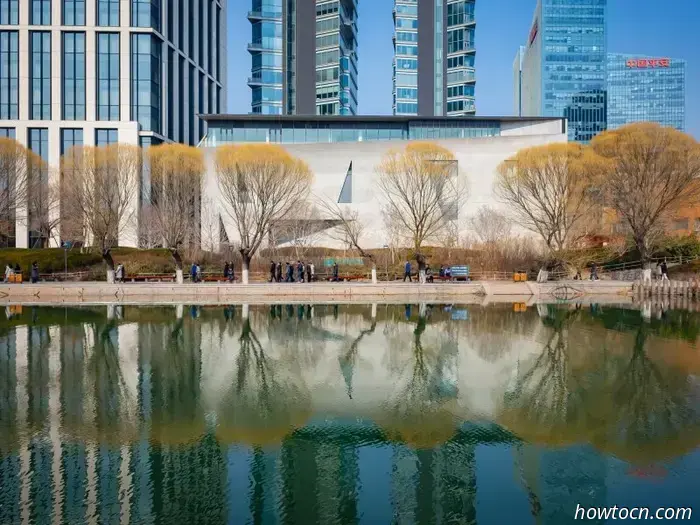
"24 Hours in Beijing" is a series where we ask influential figures in the capital how they would spend a full day in the city. In this fourth installment, we spoke with Kyle M, a former writer/editor at the Beijinger who has also contributed to National Geographic, Spin magazine, and Quartz. Originally from Canada, he moved to Beijing in 2010. For his 24 hours in Beijing, he framed it as if it were his final day in the city, detailing how he would spend it.
After 15 years in Beijing, imagining how I'd spend my last day is challenging, much less the thought of leaving. Many long-term residents might choose a classic hutong crawl because of the unique traditional architecture and the various artistic businesses located in those historical alleyways. Other departing expats might want to relive their favorite dining experiences in Sanlitun. Both options are hard to surpass. However, those who prefer a more low-key approach, like me, might opt for one last visit to familiar places near home, adding to the many cherished memories that often become our favorites. This view is easier to have, as my neighborhood in Liangmaqiao increasingly compares favorably to more popular areas in many aspects.
Morning/midday: Ideally, my last day would be warm, allowing my family, friends, and me to kayak on the Liangma River, enjoying the picturesque mix of lush greenery and impressive skyscrapers (Hello, Bulgari hotel. Greetings, Qihao Tower). Alternatively, I’d relish a picnic in Chaoyang Park and take a ride with my young co-pilot (featured in the main image) on the park's tranquil lake in one of its numerous motorboats. If you haven't noticed, bodies of water greatly appeal to me as an East Coast Canadian. One reason for my potential departure from Beijing on this hypothetical day is that I've found a place that is less landlocked.
Evening: When I look back on memories of Beijing after leaving, they will likely be tied to my time working for the Beijinger. This role helped me break out of my comfort zone and explore every corner of the city. More importantly, it transformed me from a picky eater into a food enthusiast, as I had to write numerous restaurant reviews (I hope my new home won't be too tough on my waistline). Liangmaqiao is criminally underrated for dining. Visiting Baoyuan Dumplings to indulge in their delicious jiaozi would certainly trigger nostalgia for many expats. After all, Baoyuan is a staple for Liangmaqiao’s numerous diplomats and professionals seeking an authentic yet approachable taste of local cuisine.
These days, I would also be just as content at one of the unassuming chuan’r or noodle spots across the street. Closer to my apartment, just beyond the Fourth Ring Road, Jingmulai/京穆来•西北菜(南十里居店) has been delighting me with mouthwatering authentic northwestern Chinese dishes, including thick, wavy 油泼面 yóu pō miàn noodles, succulent and fiery chuan’r, and—best of all—fluffy lamb-stuffed kao baozi. My family and friends, wishing us a warm goodbye, would surely enjoy 胡同大涮肉肉, a hotpot spot tucked away in an alley nearby. Its generous servings of beef and fresh vegetables, along with its captivating dynastic-themed murals, would leave us satisfied and ready to depart on a positive note.
I have a particular fondness for these humble yet delicious venues because they have yet to be "chai-ed" like the donkey meat sandwich shop, malatang place, and others in the comparatively central neighborhood of Hujialou, where I spent the majority of my time in Beijing before moving to Dongfengbeiqiao this year. Even the beloved dim sum restaurant, Jing Ding Xuan, fell victim to similar circumstances. I had many breakfasts at that Hujialou favorite, devouring steamed shrimp dumplings while admiring the walls covered in photos of visiting Chinese celebrities like Fan Bing Bing and Ge You. This background makes the quaint eateries in my new Dongfengbeiqiao neighborhood feel as though the street-level Beijing I cherish is still alive and well, despite years of watching my favorite spots close down due to skyrocketing real estate prices and zoning changes favoring fancier mall dining. Therefore, any of those restaurants would make great choices for a last meal in Beijing.
Conversely, a significant portion of my time in Liangmaqiao has revolved around indulging in the sadly underappreciated Japanese cuisine near the sleek (but relatively dull) Solana mall. Living so close to a Japanese embassy has allowed me and my friends to enjoy mouthwatering yakitori at Tori Tae on Lucky Street and 極北海道炭火炉端烧鸟(拾捌食酒店) in 258 Mall, as well as crispy Ika-yaki







In the fourth installment, we spoke with Kyle M, who previously worked as a writer and editor at the Beijinger.